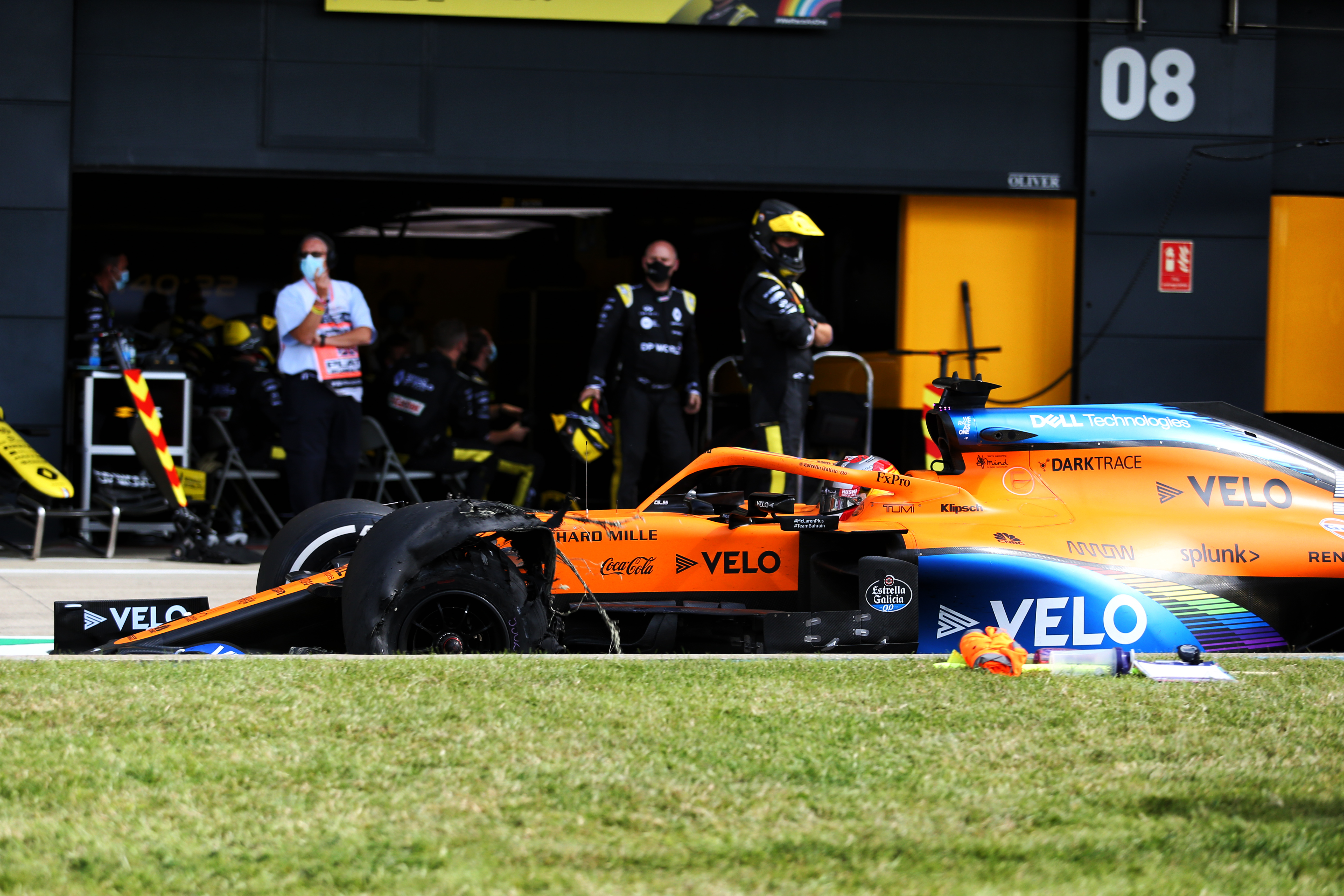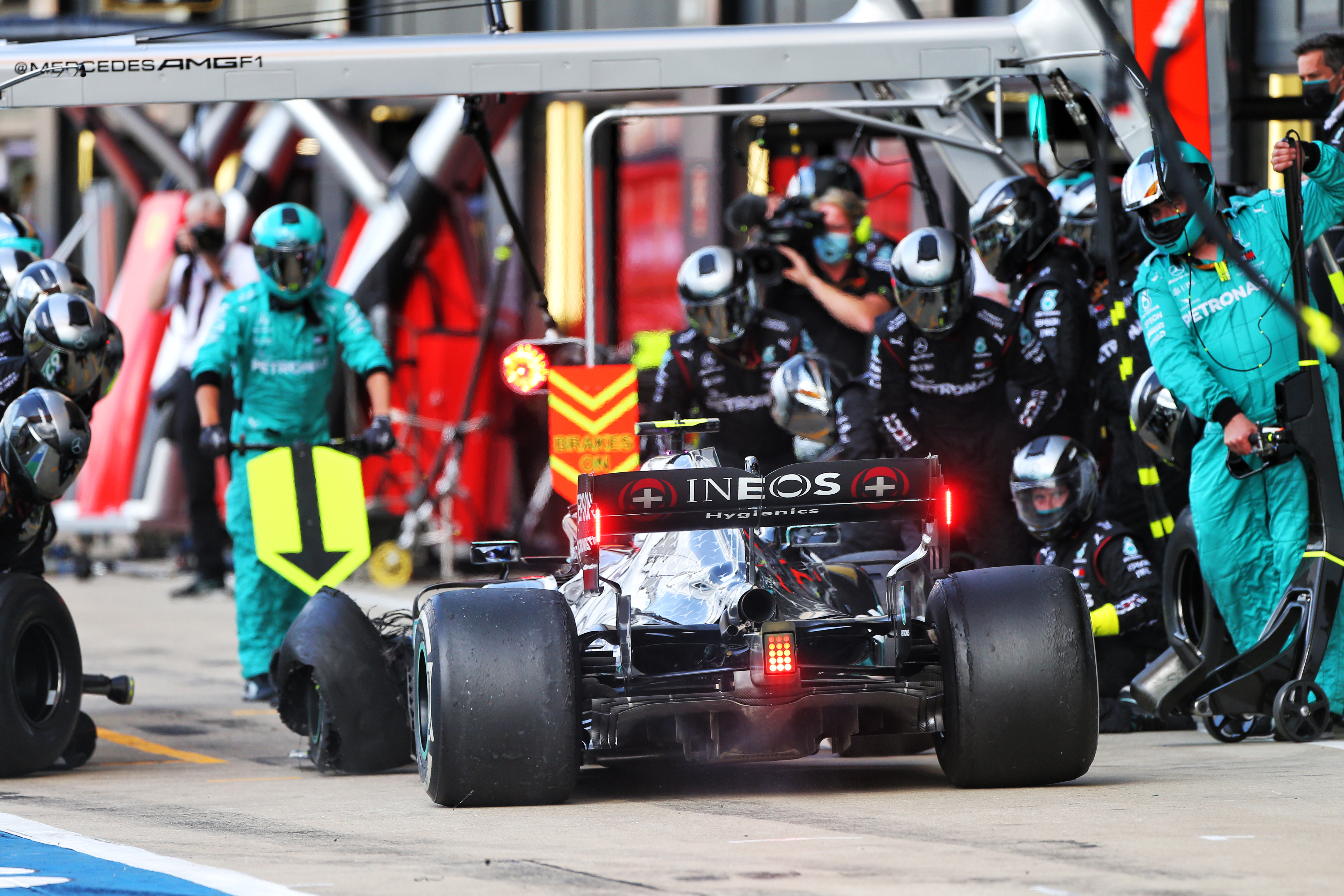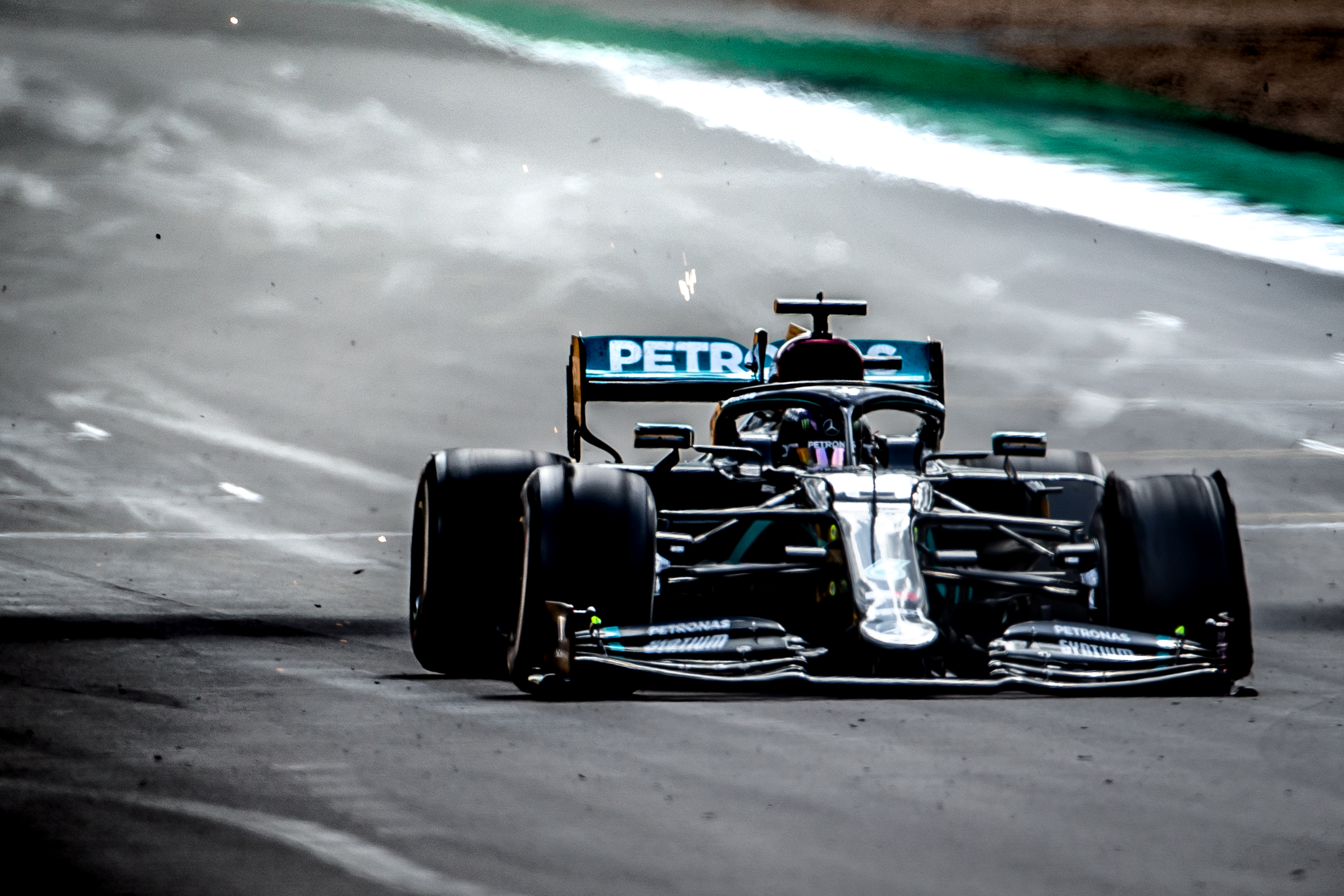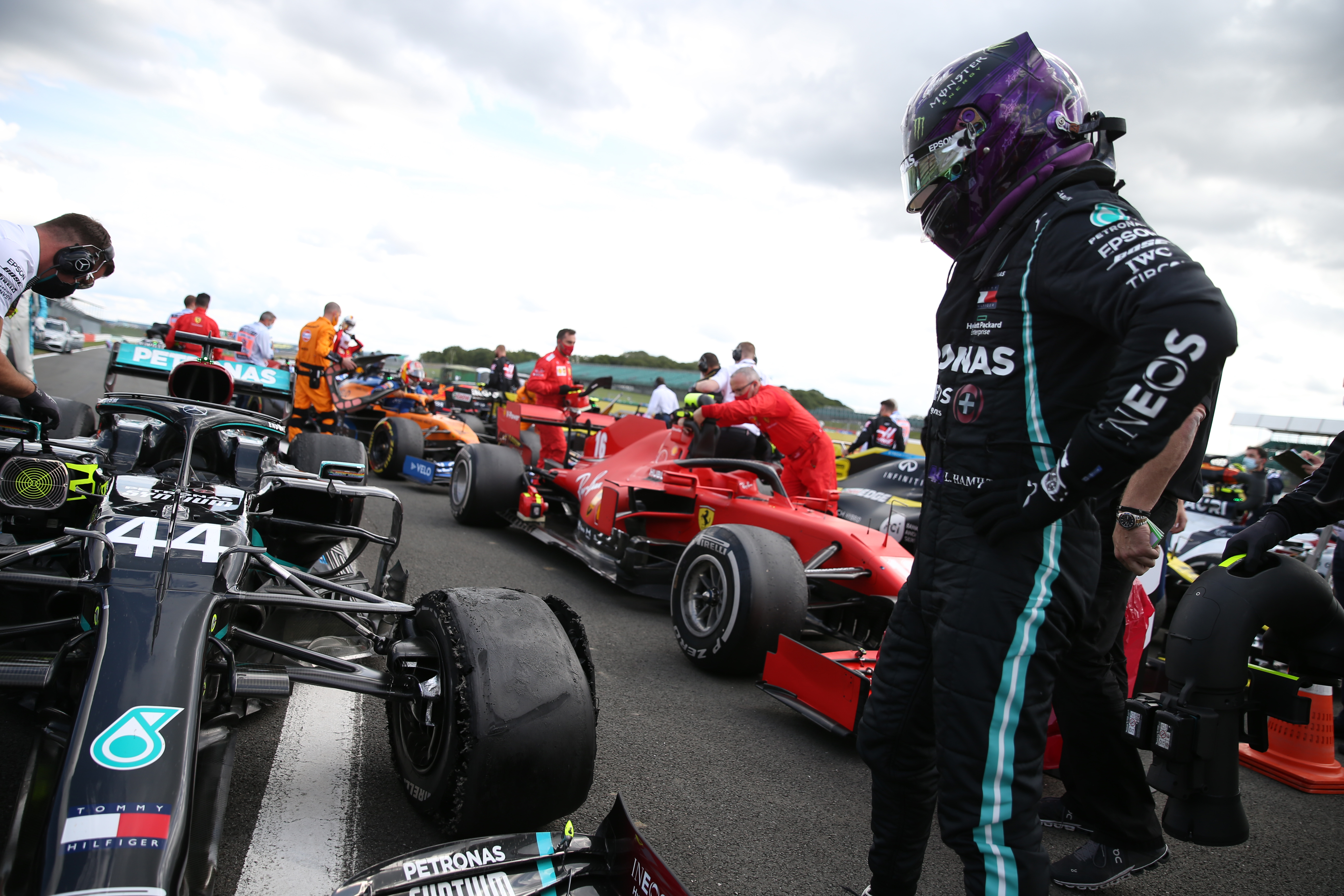Up Next

The dramatic end to the British Grand Prix in which the dominant Mercedes of Lewis Hamilton and Valtteri Bottas plus Carlos Sainz Jr’s McLaren all suffered left-front punctures threw the spotlight on Pirelli again.
The ultra-high-speed Silverstone track is a tough test for tyres anyway, but the pitstops under the safety car for Daniil Kvyat’s huge early crash also meant the field was stretching the hard tyres for nearly three-quarters race distance.
Pirelli’s motorsport chief Mario Isola made clear on Sunday night that it was too early to say what might’ve caused the issues.
The fact F1 is racing at Silverstone again just one week from now, and plans to go one step softer on the compounds for that event, gives Pirelli an urgent puzzle to solve.
Here’s what Isola’s thinking at the moment:
On potential causes

“It could be high wear because for sure tyres with 38 laps or more on this circuit are quite worn, but I’m not saying that the wear is the cause of the issue.
“It can be debris because we had some pieces of the front wing of Kimi [Raikkonen] as well that were on track but also some other debris.
“So that’s why we want to investigate on not only the tyres with a failure but all the tyres used in the last few laps of the race to understand if we find any other cut or any other possible indication on what happened.”
On the level of tyre wear in the race

“The level of wear is quite high, this is a fact. Looking at the tyre from [Romain] Grosjean on the first stint it was completely worn and I also had a look at some tyres coming from the second stint and the level of wear is close to 100%.
“Then we have to understand if this is the cause of the failure or not. What is clear is that when you have a tyre that is completely worn, the protection of the tread on the construction is less, so if there is any debris, any small piece of carbon on track, it is easier to damage the tyres because you don’t have any rubber on the tyre that is protecting the cord and some cords are visible on the tyre.
“So that’s why I’m saying that the the level of wear is close to 100%.”
On what could be done in a week

“Depending on which is the cause of the issue, we have to react appropriately. But the reaction can be different – if we are talking about the wear, for example, it doesn’t matter if we go with the same compounds we used today or with the softer compounds, each tyre has a maximum number of laps that depends on each car.
“Each car is different. It depends on the set-up, on the level of energy, the driving style, the conditions and so that’s why we cannot say that the limit is the same for everybody.
“But if the issue is the wear, we don’t fix it with changing to the same compound choice we have today or moving to a softer one. We don’t have a harder one, so we don’t have any tyre that is able to run the entire distance of the race in Silverstone.
“So we cannot go one step harder and it’s probably also not the target, because we spoke many times about the possibility to have two stops or different strategies – obviously it means that the tyres cannot last forever. So if the issue is wear, we have to think about a solution.
“If the issue was due to punctures, then obviously there is very little we can do, it’s a matter of having debris on track or not.
“If there are other issues, we have to understand which are the issues in order to react in the proper way.”
On what happens next

“We have the possibility to do some analysis on our laboratories here on track. It is clear that we don’t have a lot of time to carry on with investigation because we have another race in less than one week. So we have to come to a conclusion as soon as possible.
“The target is to have something more fully by tomorrow or Tuesday at the latest. We will continue our investigation later today and tomorrow.
“If there is the need to run any test that it is not possible to run here on track, we will send the van quickly to Milan where we have our facilities, laboratories, indoor testing, with obviously more possibilities, more testing we can do there.
“But I’m confident that we can have some good indication from the laboratories that we have here on track.”




